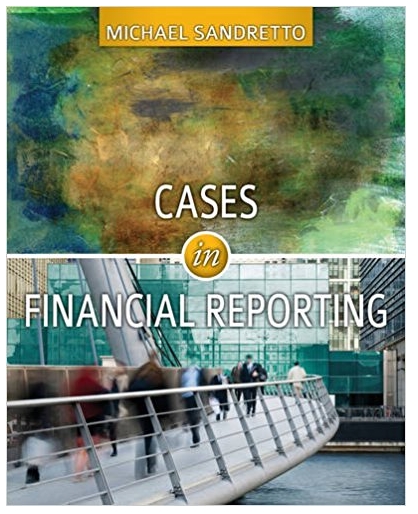1. Suppose you were advising the CEO and CFO of Brinker International or Starbucks Corporation about whether...
Question:
2. Evaluate the four operating lease rules discussed in this case. Are the rules needed? How difficult are the lease rules to implement in a large restaurant chain or retail chain, with hundreds or thousands of leases? As part of your answer, would it be reasonable for these chains to force landlords to enter into leases with standard terms that would simplify their lease accounting?
3. U.S. firms may soon shift to International Financial Reporting Standards (IFRS), where accounting standards are based far more on general principles than on highly detailed rules. For example, the International Accounting Standards Board has one standard on leases (IAS 17, Leases), and two lease interpretations (IFRIC 4, Determining Whether an Arrangement Contains a Lease, and SIC- 15, Operating Leases—Incentives). Discuss the advantages and disadvantages of far less detailed rules.
4. The IASB is considering a highly simplified lease accounting rule that would require firms to capitalize all leases with a term of more than two or three years. Discuss the advantages and disadvantages of such a simple rule.
Prior to 1970, most U.S. firms used leasing for short- term needs. A small firm might lease an office, copier, or manufacturing space for one or two years to limit the risk if the business failed. If a larger firm needed expensive equipment or a building, it often financed the asset by borrowing from a bank, using the asset as collateral. No lease accounting rules existed and none were necessary. Firms simply recorded lease expense when they made each month’s rent or lease payment.
Beginning in about 1970, U.S. firms realized they could structure long-term lease agreements that were equivalent to buying an asset with debt. A firm might purchase a $ 50 million building with a $ 50 million bank loan to be repaid over a 20-year period at $ 410,000 per month (an effective annual interest rate of about 8%). Instead, the firm might ask its bank to structure the transaction as a $ 410,000 per month 20-year lease, with the additional stipulation that at the end of 20 years the firm must purchase the building for $ 1. The firm would also maintain and insure the building.
Except for the additional $ 1 after 20 years, the terms are identical, thus the bank should be indifferent as to whether the transaction is called a loan or a lease. With a lease, however, the firm would not record the building as an asset or record the present value of lease payments as debt. Using the example in the previous paragraph, suppose the firm had $ 150 million of assets, $ 50 million of debt, and $ 100 million of equity prior to the transaction, its debt-to-equity ratio would have been 0.5. With $ 50 million of added assets and debt, the debt-to-equity ratio would increase to 1.0; with a lease, the ratio would remain at 0.5. Firms began to use leasing as one of the first forms of off- balance sheet financing. Leasing became so common that in November 1976 the newly established Financial Accounting Standards Board (FASB) issued guidance on how to account for leases (Section 840, previously FAS 13).
Financial Statements
Financial statements are the standardized formats to present the financial information related to a business or an organization for its users. Financial statements contain the historical information as well as current period’s financial... Balance Sheet
Balance sheet is a statement of the financial position of a business that list all the assets, liabilities, and owner’s equity and shareholder’s equity at a particular point of time. A balance sheet is also called as a “statement of financial... Corporation
A Corporation is a legal form of business that is separate from its owner. In other words, a corporation is a business or organization formed by a group of people, and its right and liabilities separate from those of the individuals involved. It may...
Fantastic news! We've Found the answer you've been seeking!
Step by Step Answer:
Related Book For 

Question Posted:





